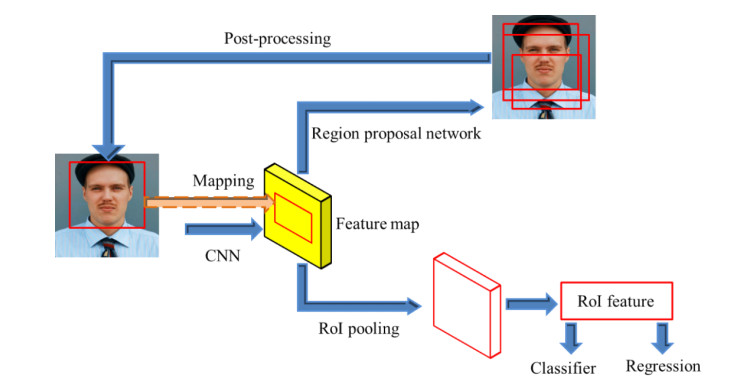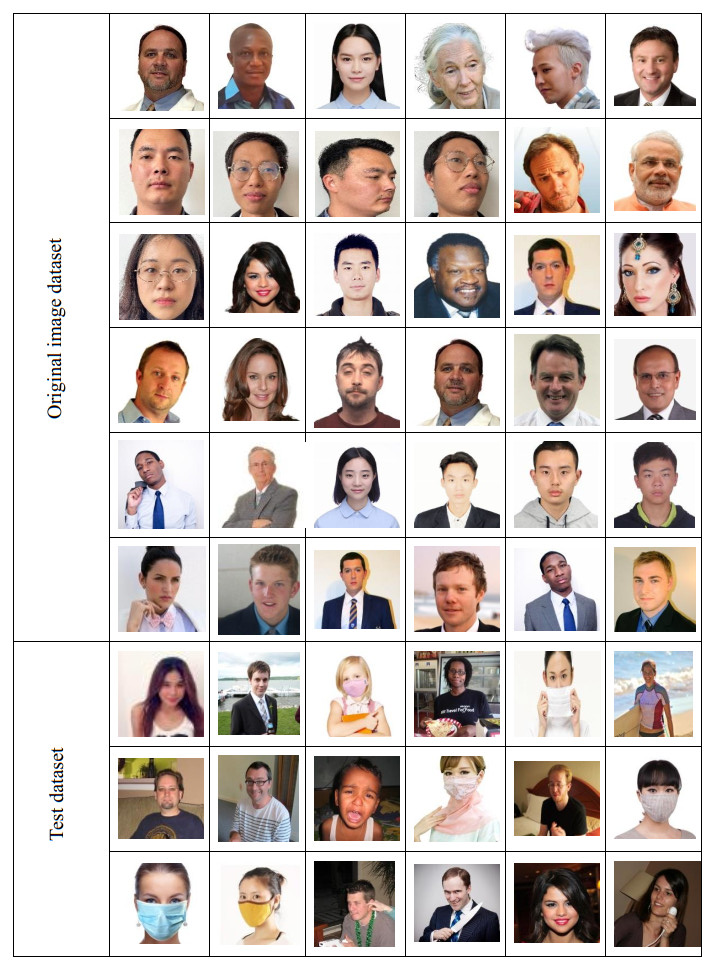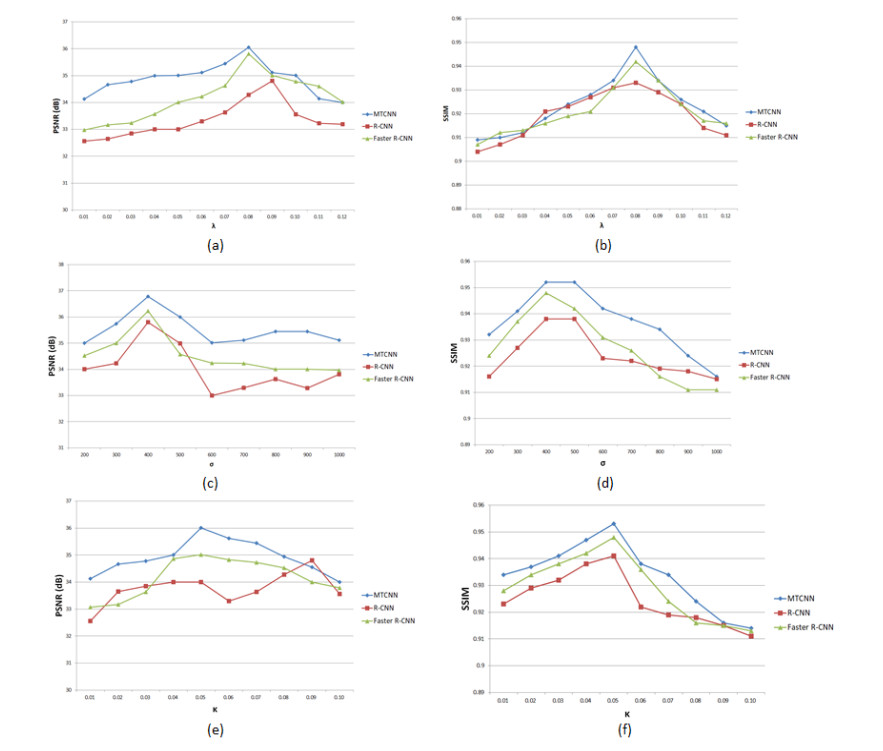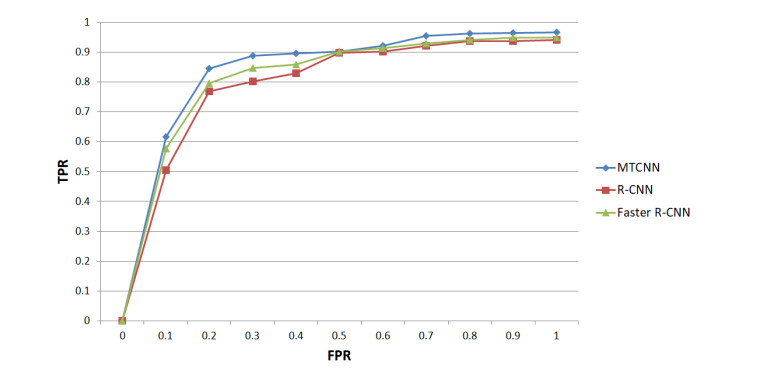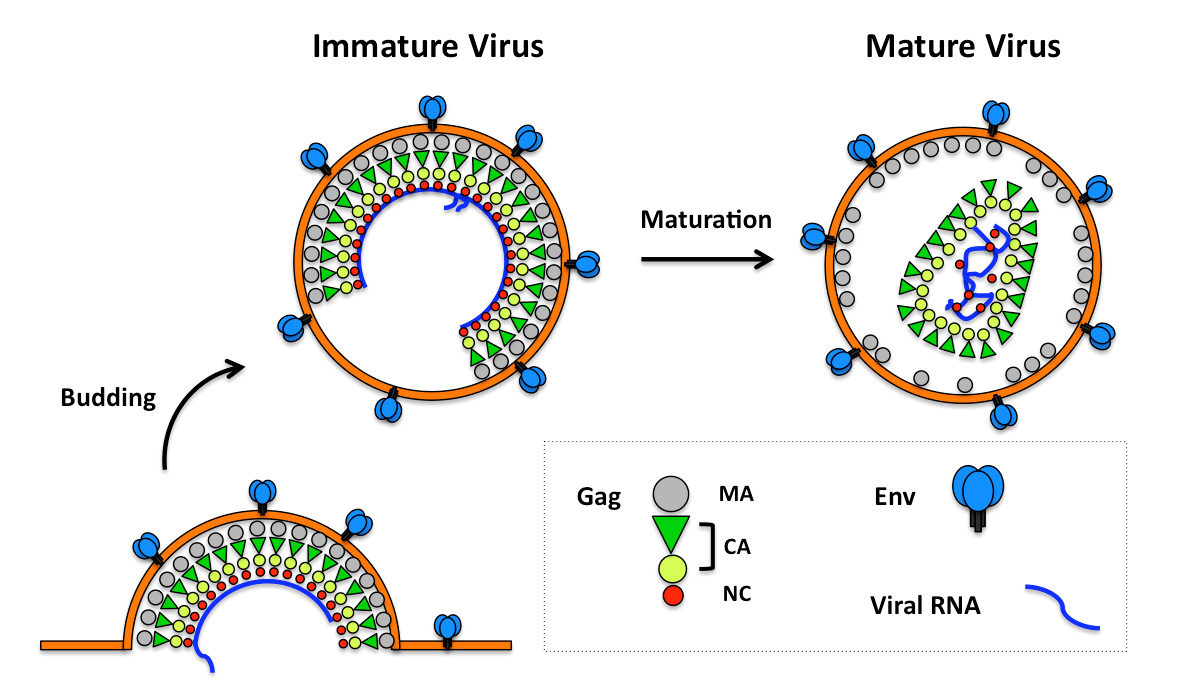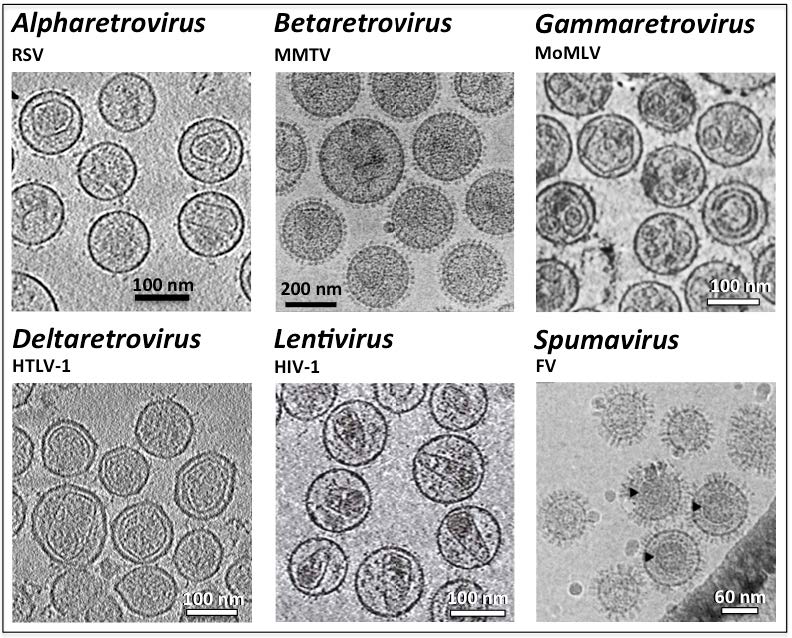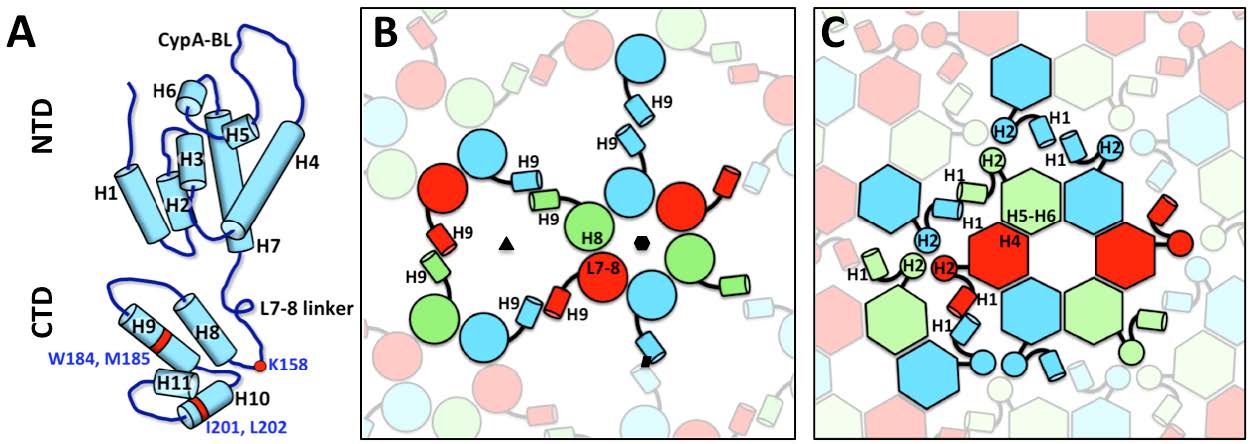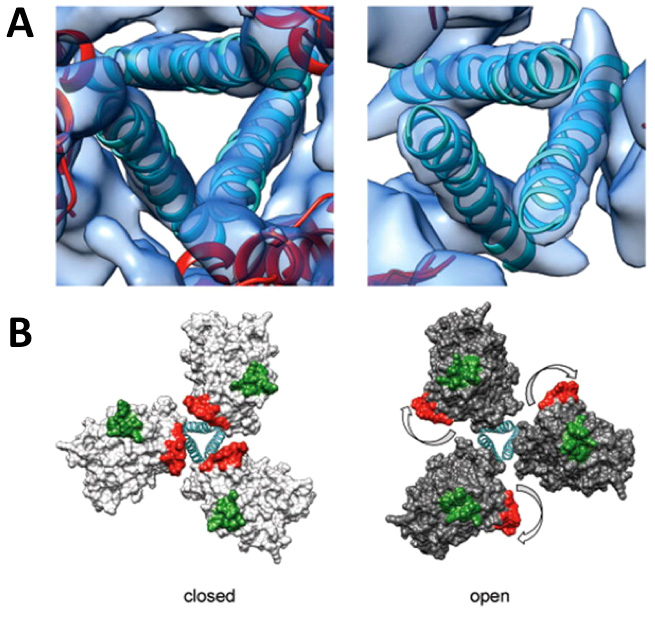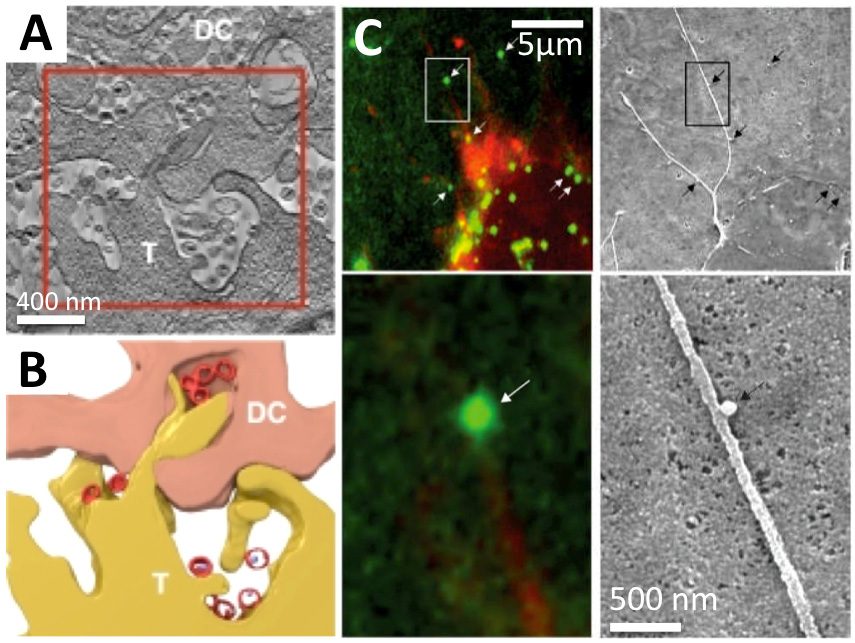|
[1]
|
Ganser-Pornillos BK, Yeager M, Pornillos O (2012) Assembly and architecture of HIV. Adv Exp Med Biol 726: 441-465. doi: 10.1007/978-1-4614-0980-9_20

|
|
[2]
|
Sundquist WI, Krausslich HG (2012) HIV-1 assembly, budding, and maturation. Cold Spring Harb Perspect Med 2: a006924.
|
|
[3]
|
Borggren M, Jansson M (2015) The Evolution of HIV-1 Interactions with Coreceptors and Mannose C-Type Lectin Receptors. Prog Mol Biol Transl Sci 129C: 109-140.
|
|
[4]
|
Miyauchi K, Kim Y, Latinovic O, et al. (2009) HIV enters cells via endocytosis and dynamin-dependent fusion with endosomes. Cell 137: 433-444. doi: 10.1016/j.cell.2009.02.046

|
|
[5]
|
Moulard M, Decroly E (2000) Maturation of HIV envelope glycoprotein precursors by cellular endoproteases. Biochim Biophys Acta 1469: 121-132. doi: 10.1016/S0304-4157(00)00014-9

|
|
[6]
|
Low JT, Garcia-Miranda P, Mouzakis KD, et al. (2014) Structure and dynamics of the HIV-1 frameshift element RNA. Biochemistry 53: 4282-4291. doi: 10.1021/bi5004926

|
|
[7]
|
Stephenson JD, Li H, Kenyon JC, et al. (2013) Three-dimensional RNA structure of the major HIV-1 packaging signal region. Structure 21: 951-962. doi: 10.1016/j.str.2013.04.008

|
|
[8]
|
Watts JM, Dang KK, Gorelick RJ, et al. (2009) Architecture and secondary structure of an entire HIV-1 RNA genome. Nature 460: 711-716. doi: 10.1038/nature08237

|
|
[9]
|
Swanstrom R, Wills JW (1997) Synthesis, Assembly, and Processing of Viral Proteins. In: Coffin JM HS, Varmus HE, editor. Retroviruses. Cold Spring Harbor, New York: Cold Spring Harbor Laboratory Press.
|
|
[10]
|
Checkley MA, Luttge BG, Freed EO (2011) HIV-1 envelope glycoprotein biosynthesis, trafficking, and incorporation. J Mol Biol 410: 582-608. doi: 10.1016/j.jmb.2011.04.042

|
|
[11]
|
Postler TS, Desrosiers RC (2013) The tale of the long tail: the cytoplasmic domain of HIV-1 gp41. J Virol 87: 2-15. doi: 10.1128/JVI.02053-12

|
|
[12]
|
Bharat TA, Davey NE, Ulbrich P, et al. (2012) Structure of the immature retroviral capsid at 8 A resolution by cryo-electron microscopy. Nature 487: 385-389. doi: 10.1038/nature11169

|
|
[13]
|
Maldonado JO, Martin JL, Mueller JD, et al. (2014) New insights into retroviral Gag-Gag and Gag-membrane interactions. Front Microbiol 5: 302.
|
|
[14]
|
Sonnino S, Prinetti A (2013) Membrane domains and the “lipid raft” concept. Curr Med Chem 20: 4-21.
|
|
[15]
|
Levin JG, Mitra M, Mascarenhas A, et al. (2010) Role of HIV-1 nucleocapsid protein in HIV-1 reverse transcription. RNA Biol 7: 754-774. doi: 10.4161/rna.7.6.14115

|
|
[16]
|
Jiang J, Aiken C (2007) Maturation-dependent human immunodeficiency virus type 1 particle fusion requires a carboxyl-terminal region of the gp41 cytoplasmic tail. J Virol 81: 9999-10008. doi: 10.1128/JVI.00592-07

|
|
[17]
|
Wyma DJ, Jiang J, Shi J, et al. (2004) Coupling of human immunodeficiency virus type 1 fusion to virion maturation: a novel role of the gp41 cytoplasmic tail. J Virol 78: 3429-3435. doi: 10.1128/JVI.78.7.3429-3435.2004

|
|
[18]
|
Aiken C, Zhang P (2013) HIV-1 Maturation. In: Freed EO, editor. Advances in HIV-1 Assembly and Release: Springer.
|
|
[19]
|
Forshey BM, von Schwedler U, Sundquist WI, et al. (2002) Formation of a human immunodeficiency virus type 1 core of optimal stability is crucial for viral replication. J Virol 76: 5667-5677. doi: 10.1128/JVI.76.11.5667-5677.2002

|
|
[20]
|
Ganser-Pornillos BK, Yeager M, Sundquist WI (2008) The structural biology of HIV assembly. Curr Opin Struct Biol 18: 203-217. doi: 10.1016/j.sbi.2008.02.001

|
|
[21]
|
Bush DL, Vogt VM (2014) In Vitro Assembly of Retroviruses. Annual Reviews in Virology 1: 561-580. doi: 10.1146/annurev-virology-031413-085427

|
|
[22]
|
Briggs JA (2013) Structural biology in situ--the potential of subtomogram averaging. Curr Opin Struct Biol 23: 261-267. doi: 10.1016/j.sbi.2013.02.003

|
|
[23]
|
Merk A, Subramaniam S (2013) HIV-1 envelope glycoprotein structure. Curr Opin Struct Biol 23: 268-276. doi: 10.1016/j.sbi.2013.03.007

|
|
[24]
|
Briggs JA, Simon MN, Gross I, et al. (2004) The stoichiometry of Gag protein in HIV-1. Nat Struct Mol Biol 11: 672-675. doi: 10.1038/nsmb785

|
|
[25]
|
Butan C, Winkler DC, Heymann JB, et al. (2008) RSV capsid polymorphism correlates with polymerization efficiency and envelope glycoprotein content: implications that nucleation controls morphogenesis. J Mol Biol 376: 1168-1181. doi: 10.1016/j.jmb.2007.12.003

|
|
[26]
|
Fuller SD, Wilk T, Gowen BE, et al. (1997) Cryo-electron microscopy reveals ordered domains in the immature HIV-1 particle. Curr Biol 7: 729-738. doi: 10.1016/S0960-9822(06)00331-9

|
|
[27]
|
Kingston RL, Olson NH, Vogt VM (2001) The organization of mature Rous sarcoma virus as studied by cryoelectron microscopy. J Struct Biol 136: 67-80. doi: 10.1006/jsbi.2001.4423

|
|
[28]
|
Yeager M, Wilson-Kubalek EM, Weiner SG, et al. (1998) Supramolecular organization of immature and mature murine leukemia virus revealed by electron cryo-microscopy: implications for retroviral assembly mechanisms. Proc Natl Acad Sci U S A 95: 7299-7304. doi: 10.1073/pnas.95.13.7299

|
|
[29]
|
Carlson LA, Briggs JA, Glass B, et al. (2008) Three-dimensional analysis of budding sites and released virus suggests a revised model for HIV-1 morphogenesis. Cell Host Microbe 4: 592-599. doi: 10.1016/j.chom.2008.10.013

|
|
[30]
|
Briggs JA, Johnson MC, Simon MN, et al. (2006) Cryo-electron microscopy reveals conserved and divergent features of gag packing in immature particles of Rous sarcoma virus and human immunodeficiency virus. J Mol Biol 355: 157-168. doi: 10.1016/j.jmb.2005.10.025

|
|
[31]
|
Briggs JA, Riches JD, Glass B, et al. (2009) Structure and assembly of immature HIV. Proc Natl Acad Sci U S A 106: 11090-11095. doi: 10.1073/pnas.0903535106

|
|
[32]
|
Keller PW, Huang RK, England MR, et al. (2013) A two-pronged structural analysis of retroviral maturation indicates that core formation proceeds by a disassembly-reassembly pathway rather than a displacive transition. J Virol 87: 13655-13664. doi: 10.1128/JVI.01408-13

|
|
[33]
|
Wright ER, Schooler JB, Ding HJ, et al. (2007) Electron cryotomography of immature HIV-1 virions reveals the structure of the CA and SP1 Gag shells. EMBO J 26: 2218-2226. doi: 10.1038/sj.emboj.7601664

|
|
[34]
|
de Marco A, Davey NE, Ulbrich P, et al. (2010) Conserved and variable features of Gag structure and arrangement in immature retrovirus particles. J Virol 84: 11729-11736. doi: 10.1128/JVI.01423-10

|
|
[35]
|
Datta SA, Temeselew LG, Crist RM, et al. (2011) On the role of the SP1 domain in HIV-1 particle assembly: a molecular switch? J Virol 85: 4111-4121. doi: 10.1128/JVI.00006-11

|
|
[36]
|
Liang C, Hu J, Russell RS, et al. (2002) Characterization of a putative alpha-helix across the capsid-SP1 boundary that is critical for the multimerization of human immunodeficiency virus type 1 gag. J Virol 76: 11729-11737. doi: 10.1128/JVI.76.22.11729-11737.2002

|
|
[37]
|
Briggs JA, Wilk T, Welker R, et al. (2003) Structural organization of authentic, mature HIV-1 virions and cores. EMBO J 22: 1707-1715. doi: 10.1093/emboj/cdg143

|
|
[38]
|
Ganser BK, Li S, Klishko VY, et al. (1999) Assembly and analysis of conical models for the HIV-1 core. Science 283: 80-83. doi: 10.1126/science.283.5398.80

|
|
[39]
|
Heymann JB, Butan C, Winkler DC, et al. (2008) Irregular and Semi-Regular Polyhedral Models for Rous Sarcoma Virus Cores. Comput Math Methods Med 9: 197-210. doi: 10.1080/17486700802168106

|
|
[40]
|
Cao S, Maldonado JO, Grigsby IF, et al. (2015) Analysis of human T-cell leukemia virus type 1 particles using cryo-electron tomography. J Virol 89: 2430-2435. doi: 10.1128/JVI.02358-14

|
|
[41]
|
Li S, Hill CP, Sundquist WI, et al. (2000) Image reconstructions of helical assemblies of the HIV-1 CA protein. Nature 407: 409-413. doi: 10.1038/35030177

|
|
[42]
|
Thomas D, Schultz P, Steven AC, et al. (1994) Mass analysis of biological macromolecular complexes by STEM. Biol Cell 80: 181-192. doi: 10.1111/j.1768-322X.1994.tb00929.x

|
|
[43]
|
Fogarty KH, Zhang W, Grigsby IF, et al. (2011) New insights into HTLV-1 particle structure, assembly, and Gag-Gag interactions in living cells. Viruses 3: 770-793. doi: 10.3390/v3060770

|
|
[44]
|
Johnson J, Chen Y, Mueller JD (2010) Characterization of brightness and stoichiometry of bright particles by flow-fluorescence fluctuation spectroscopy. Biophys J 99: 3084-3092. doi: 10.1016/j.bpj.2010.08.057

|
|
[45]
|
Parker SD, Wall JS, Hunter E (2001) Analysis of Mason-Pfizer monkey virus Gag particles by scanning transmission electron microscopy. J Virol 75: 9543-9548. doi: 10.1128/JVI.75.19.9543-9548.2001

|
|
[46]
|
Vogt VM, Simon MN (1999) Mass determination of rous sarcoma virus virions by scanning transmission electron microscopy. J Virol 73: 7050-7055.
|
|
[47]
|
Yu F, Joshi SM, Ma YM, et al. (2001) Characterization of Rous sarcoma virus Gag particles assembled in vitro. J Virol 75: 2753-2764. doi: 10.1128/JVI.75.6.2753-2764.2001

|
|
[48]
|
Chen Y, Wu B, Musier-Forsyth K, et al. (2009) Fluorescence fluctuation spectroscopy on viral-like particles reveals variable gag stoichiometry. Biophys J 96: 1961-1969. doi: 10.1016/j.bpj.2008.10.067

|
|
[49]
|
Grigsby IF, Zhang W, Johnson JL, et al. (2010) Biophysical analysis of HTLV-1 particles reveals novel insights into particle morphology and Gag stochiometry. Retrovirology 7: 75. doi: 10.1186/1742-4690-7-75

|
|
[50]
|
Lanman J, Lam TT, Emmett MR, et al. (2004) Key interactions in HIV-1 maturation identified by hydrogen-deuterium exchange. Nat Struct Mol Biol 11: 676-677. doi: 10.1038/nsmb790

|
|
[51]
|
Briggs JA, Watson BE, Gowen BE, et al. (2004) Cryoelectron microscopy of mouse mammary tumor virus. J Virol 78: 2606-2608. doi: 10.1128/JVI.78.5.2606-2608.2004

|
|
[52]
|
Forster F, Medalia O, Zauberman N, et al. (2005) Retrovirus envelope protein complex structure in situ studied by cryo-electron tomography. Proc Natl Acad Sci U S A 102: 4729-4734. doi: 10.1073/pnas.0409178102

|
|
[53]
|
Briggs JA, Grunewald K, Glass B, et al. (2006) The mechanism of HIV-1 core assembly: insights from three-dimensional reconstructions of authentic virions. Structure 14: 15-20. doi: 10.1016/j.str.2005.09.010

|
|
[54]
|
Hamann MV, Mullers E, Reh J, et al. (2014) The cooperative function of arginine residues in the Prototype Foamy Virus Gag C-terminus mediates viral and cellular RNA encapsidation. Retrovirology 11: 87. doi: 10.1186/s12977-014-0087-7

|
|
[55]
|
Roux KH, Taylor KA (2007) AIDS virus envelope spike structure. Curr Opin Struct Biol 17: 244-252. doi: 10.1016/j.sbi.2007.03.008

|
|
[56]
|
Liu J, Bartesaghi A, Borgnia MJ, et al. (2008) Molecular architecture of native HIV-1 gp120 trimers. Nature 455: 109-113. doi: 10.1038/nature07159

|
|
[57]
|
Zanetti G, Briggs JA, Grunewald K, et al. (2006) Cryo-electron tomographic structure of an immunodeficiency virus envelope complex in situ. PLoS Pathog 2: e83. doi: 10.1371/journal.ppat.0020083

|
|
[58]
|
Harris A, Borgnia MJ, Shi D, et al. (2011) Trimeric HIV-1 glycoprotein gp140 immunogens and native HIV-1 envelope glycoproteins display the same closed and open quaternary molecular architectures. Proc Natl Acad Sci U S A 108: 11440-11445. doi: 10.1073/pnas.1101414108

|
|
[59]
|
Meyerson JR, Tran EE, Kuybeda O, et al. (2013) Molecular structures of trimeric HIV-1 Env in complex with small antibody derivatives. Proc Natl Acad Sci U S A 110: 513-518. doi: 10.1073/pnas.1214810110

|
|
[60]
|
Tran EE, Borgnia MJ, Kuybeda O, et al. (2012) Structural mechanism of trimeric HIV-1 envelope glycoprotein activation. PLoS Pathog 8: e1002797. doi: 10.1371/journal.ppat.1002797

|
|
[61]
|
White TA, Bartesaghi A, Borgnia MJ, et al. (2011) Three-dimensional structures of soluble CD4-bound states of trimeric simian immunodeficiency virus envelope glycoproteins determined by using cryo-electron tomography. J Virol 85: 12114-12123. doi: 10.1128/JVI.05297-11

|
|
[62]
|
White TA, Bartesaghi A, Borgnia MJ, et al. (2010) Molecular architectures of trimeric SIV and HIV-1 envelope glycoproteins on intact viruses: strain-dependent variation in quaternary structure. PLoS Pathog 6: e1001249. doi: 10.1371/journal.ppat.1001249

|
|
[63]
|
Loving R, Wu SR, Sjoberg M, et al. (2012) Maturation cleavage of the murine leukemia virus Env precursor separates the transmembrane subunits to prime it for receptor triggering. Proc Natl Acad Sci U S A 109: 7735-7740. doi: 10.1073/pnas.1118125109

|
|
[64]
|
Sjoberg M, Wu SR, Loving R, et al. (2014) Furin cleavage of the Moloney murine leukemia virus Env precursor reorganizes the spike structure. Proc Natl Acad Sci U S A 111: 6034-6039. doi: 10.1073/pnas.1317972111

|
|
[65]
|
Wu SR, Sjoberg M, Wallin M, et al. (2008) Turning of the receptor-binding domains opens up the murine leukaemia virus Env for membrane fusion. EMBO J 27: 2799-2808. doi: 10.1038/emboj.2008.187

|
|
[66]
|
Zhu P, Liu J, Bess J, Jr., et al. (2006) Distribution and three-dimensional structure of AIDS virus envelope spikes. Nature 441: 847-852. doi: 10.1038/nature04817

|
|
[67]
|
Schur FK, Hagen WJ, Rumlova M, et al. (2015) Structure of the immature HIV-1 capsid in intact virus particles at 8.8 A resolution. . Nature 517: 505-508.
|
|
[68]
|
Pettersen EF, Goddard TD, Huang CC, et al. (2004) UCSF Chimera--a visualization system for exploratory research and analysis. J Comput Chem 25: 1605-1612. doi: 10.1002/jcc.20084

|
|
[69]
|
Zhao G, Perilla JR, Yufenyuy EL, et al. (2013) Mature HIV-1 capsid structure by cryo-electron microscopy and all-atom molecular dynamics. Nature 497: 643-646. doi: 10.1038/nature12162

|
|
[70]
|
Cardone G, Purdy JG, Cheng N, et al. (2009) Visualization of a missing link in retrovirus capsid assembly. Nature 457: 694-698. doi: 10.1038/nature07724

|
|
[71]
|
Hyun JK, Radjainia M, Kingston RL, et al. (2010) Proton-driven assembly of the Rous Sarcoma virus capsid protein results in the formation of icosahedral particles. J Biol Chem 285: 15056-15064. doi: 10.1074/jbc.M110.108209

|
|
[72]
|
Ganser-Pornillos BK, Cheng A, Yeager M (2007) Structure of full-length HIV-1 CA: a model for the mature capsid lattice. Cell 131: 70-79. doi: 10.1016/j.cell.2007.08.018

|
|
[73]
|
Bartesaghi A, Merk A, Borgnia MJ, et al. (2013) Prefusion structure of trimeric HIV-1 envelope glycoprotein determined by cryo-electron microscopy. Nat Struct Mol Biol 20: 1352-1357. doi: 10.1038/nsmb.2711

|
|
[74]
|
Lyumkis D, Julien JP, de Val N, et al. (2013) Cryo-EM structure of a fully glycosylated soluble cleaved HIV-1 envelope trimer. Science 342: 1484-1490. doi: 10.1126/science.1245627

|
|
[75]
|
Bartesaghi A, Lecumberry F, Sapiro G, et al. (2012) Protein secondary structure determination by constrained single-particle cryo-electron tomography. Structure 20: 2003-2013. doi: 10.1016/j.str.2012.10.016

|
|
[76]
|
Schur FK, Hagen WJ, de Marco A, et al. (2013) Determination of protein structure at 8.5A resolution using cryo-electron tomography and sub-tomogram averaging. . J Struct Biol 184: 394-400.
|
|
[77]
|
Tang C, Ndassa Y, Summers MF (2002) Structure of the N-terminal 283-residue fragment of the immature HIV-1 Gag polyprotein. Nat Struct Biol 9: 537-543.
|
|
[78]
|
Pornillos O, Ganser-Pornillos BK, Kelly BN, et al. (2009) X-ray structures of the hexameric building block of the HIV capsid. Cell 137: 1282-1292. doi: 10.1016/j.cell.2009.04.063

|
|
[79]
|
Macek P, Chmelik J, Krizova I, et al. (2009) NMR structure of the N-terminal domain of capsid protein from the mason-pfizer monkey virus. J Mol Biol 392: 100-114. doi: 10.1016/j.jmb.2009.06.029

|
|
[80]
|
Bharat TA, Castillo Menendez LR, Hagen WJ, et al. (2014) Cryo-electron microscopy of tubular arrays of HIV-1 Gag resolves structures essential for immature virus assembly. Proc Natl Acad Sci U S A 111: 8233-8238. doi: 10.1073/pnas.1401455111

|
|
[81]
|
Mao Y, Wang L, Gu C, et al. (2012) Subunit organization of the membrane-bound HIV-1 envelope glycoprotein trimer. Nat Struct Mol Biol 19: 893-899. doi: 10.1038/nsmb.2351

|
|
[82]
|
Mao Y, Wang L, Gu C, et al. (2013) Molecular architecture of the uncleaved HIV-1 envelope glycoprotein trimer. Proc Natl Acad Sci U S A 110: 12438-12443. doi: 10.1073/pnas.1307382110

|
|
[83]
|
Cohen J Structural biology. Is high-tech view of HIV too good to be true? Science 341: 443-444.
|
|
[84]
|
Henderson R Avoiding the pitfalls of single particle cryo-electron microscopy: Einstein from noise. Proc Natl Acad Sci U S A 110: 18037-18041.
|
|
[85]
|
Mao Y, Castillo-Menendez LR, Sodroski JG Reply to Subramaniam, van Heel, and Henderson: Validity of the cryo-electron microscopy structures of the HIV-1 envelope glycoprotein complex. Proc Natl Acad Sci U S A 110: E4178-4182.
|
|
[86]
|
Frank GA, Narayan K, Bess JW, Jr., et al. (2015) Maturation of the HIV-1 core by a non-diffusional phase transition. Nat Commun 6: 5854. doi: 10.1038/ncomms6854

|
|
[87]
|
van Heel M Finding trimeric HIV-1 envelope glycoproteins in random noise. Proc Natl Acad Sci U S A 110: E4175-4177.
|
|
[88]
|
Mammano F, Ohagen A, Hoglund S, et al. (1994) Role of the major homology region of human immunodeficiency virus type 1 in virion morphogenesis. J Virol 68: 4927-4936.
|
|
[89]
|
von Schwedler UK, Stray KM, Garrus JE, et al. (2003) Functional surfaces of the human immunodeficiency virus type 1 capsid protein. J Virol 77: 5439-5450. doi: 10.1128/JVI.77.9.5439-5450.2003

|
|
[90]
|
Chu HH, Chang YF, Wang CT (2006) Mutations in the alpha-helix directly C-terminal to the major homology region of human immunodeficiency virus type 1 capsid protein disrupt Gag multimerization and markedly impair virus particle production. J Biomed Sci 13: 645-656. doi: 10.1007/s11373-006-9094-6

|
|
[91]
|
Gamble TR, Yoo S, Vajdos FF, et al. (1997) Structure of the carboxyl-terminal dimerization domain of the HIV-1 capsid protein. Science 278: 849-853. doi: 10.1126/science.278.5339.849

|
|
[92]
|
Ono A, Ablan SD, Lockett SJ, et al. (2004) Phosphatidylinositol (4,5) bisphosphate regulates HIV-1 Gag targeting to the plasma membrane. Proc Natl Acad Sci U S A 101: 14889-14894. doi: 10.1073/pnas.0405596101

|
|
[93]
|
Saad JS, Miller J, Tai J, et al. (2006) Structural basis for targeting HIV-1 Gag proteins to the plasma membrane for virus assembly. Proc Natl Acad Sci U S A 103: 11364-11369. doi: 10.1073/pnas.0602818103

|
|
[94]
|
Fogarty KH, Chen Y, Grigsby IF, et al. (2011) Characterization of cytoplasmic Gag-gag interactions by dual-color z-scan fluorescence fluctuation spectroscopy. Biophys J 100: 1587-1595. doi: 10.1016/j.bpj.2011.02.008

|
|
[95]
|
Lindwasser OW, Resh MD (2004) Human immunodeficiency virus type 1 Gag contains a dileucine-like motif that regulates association with multivesicular bodies. J Virol 78: 6013-6023. doi: 10.1128/JVI.78.11.6013-6023.2004

|
|
[96]
|
Muriaux D, Mirro J, Harvin D, et al. (2001) RNA is a structural element in retrovirus particles. Proc Natl Acad Sci U S A 98: 5246-5251. doi: 10.1073/pnas.091000398

|
|
[97]
|
Poole E, Strappe P, Mok HP, et al. (2005) HIV-1 Gag-RNA interaction occurs at a perinuclear/centrosomal site; analysis by confocal microscopy and FRET. Traffic 6: 741-755. doi: 10.1111/j.1600-0854.2005.00312.x

|
|
[98]
|
Bailey GD, Hyun JK, Mitra AK, et al. (2012) A structural model for the generation of continuous curvature on the surface of a retroviral capsid. J Mol Biol 417: 212-223. doi: 10.1016/j.jmb.2012.01.014

|
|
[99]
|
Mortuza GB, Haire LF, Stevens A, et al. (2004) High-resolution structure of a retroviral capsid hexameric amino-terminal domain. Nature 431: 481-485. doi: 10.1038/nature02915

|
|
[100]
|
Byeon IJ, Meng X, Jung J, et al. (2009) Structural convergence between Cryo-EM and NMR reveals intersubunit interactions critical for HIV-1 capsid function. Cell 139: 780-790. doi: 10.1016/j.cell.2009.10.010

|
|
[101]
|
Yang H, Ji X, Zhao G, et al. (2012) Structural insight into HIV-1 capsid recognition by rhesus TRIM5alpha. Proc Natl Acad Sci U S A 109: 18372-18377. doi: 10.1073/pnas.1210903109

|
|
[102]
|
Zhao G, Ke D, Vu T, et al. (2011) Rhesus TRIM5alpha disrupts the HIV-1 capsid at the inter-hexamer interfaces. PLoS Pathog 7: e1002009. doi: 10.1371/journal.ppat.1002009

|
|
[103]
|
Gres AT, Kirby KA, KewalRamani VN, et al. (2015) X-ray crystal structures of native HIV-1 capsid protein reveal conformational variability. Science.
|
|
[104]
|
Dalgleish AG, Beverley PC, Clapham PR, et al. (1984) The CD4 (T4) antigen is an essential component of the receptor for the AIDS retrovirus. Nature 312: 763-767. doi: 10.1038/312763a0

|
|
[105]
|
Trkola A, Dragic T, Arthos J, et al. (1996) CD4-dependent, antibody-sensitive interactions between HIV-1 and its co-receptor CCR-5. Nature 384: 184-187. doi: 10.1038/384184a0

|
|
[106]
|
Wyatt R, Sodroski J (1998) The HIV-1 envelope glycoproteins: fusogens, antigens, and immunogens. Science 280: 1884-1888. doi: 10.1126/science.280.5371.1884

|
|
[107]
|
Buzon V, Natrajan G, Schibli D, et al. (2010) Crystal structure of HIV-1 gp41 including both fusion peptide and membrane proximal external regions. PLoS Pathog 6: e1000880. doi: 10.1371/journal.ppat.1000880

|
|
[108]
|
Chan DC, Fass D, Berger JM, et al. (1997) Core structure of gp41 from the HIV envelope glycoprotein. Cell 89: 263-273. doi: 10.1016/S0092-8674(00)80205-6

|
|
[109]
|
Tan K, Liu J, Wang J, et al. (1997) Atomic structure of a thermostable subdomain of HIV-1 gp41. Proc Natl Acad Sci U S A 94: 12303-12308. doi: 10.1073/pnas.94.23.12303

|
|
[110]
|
Weissenhorn W, Dessen A, Harrison SC, et al. (1997) Atomic structure of the ectodomain from HIV-1 gp41. Nature 387: 426-430. doi: 10.1038/387426a0

|
|
[111]
|
Chen L, Kwon YD, Zhou T, et al. (2009) Structural basis of immune evasion at the site of CD4 attachment on HIV-1 gp120. Science 326: 1123-1127. doi: 10.1126/science.1175868

|
|
[112]
|
Huang CC, Lam SN, Acharya P, et al. (2007) Structures of the CCR5 N terminus and of a tyrosine-sulfated antibody with HIV-1 gp120 and CD4. Science 317: 1930-1934. doi: 10.1126/science.1145373

|
|
[113]
|
Huang CC, Tang M, Zhang MY, et al. (2005) Structure of a V3-containing HIV-1 gp120 core. Science 310: 1025-1028. doi: 10.1126/science.1118398

|
|
[114]
|
Huang J, Ofek G, Laub L, et al. (2012) Broad and potent neutralization of HIV-1 by a gp41-specific human antibody. Nature 491: 406-412. doi: 10.1038/nature11544

|
|
[115]
|
Kwong PD, Wyatt R, Robinson J, et al. (1998) Structure of an HIV gp120 envelope glycoprotein in complex with the CD4 receptor and a neutralizing human antibody. Nature 393: 648-659. doi: 10.1038/31405

|
|
[116]
|
McLellan JS, Pancera M, Carrico C, et al. (2011) Structure of HIV-1 gp120 V1/V2 domain with broadly neutralizing antibody PG9. Nature 480: 336-343. doi: 10.1038/nature10696

|
|
[117]
|
Pejchal R, Doores KJ, Walker LM, et al. (2011) A potent and broad neutralizing antibody recognizes and penetrates the HIV glycan shield. Science 334: 1097-1103. doi: 10.1126/science.1213256

|
|
[118]
|
Ward AB, Wilson IA (2015) Insights into the trimeric HIV-1 envelope glycoprotein structure. Trends Biochem Sci 40: 101-107. doi: 10.1016/j.tibs.2014.12.006

|
|
[119]
|
Zhou T, Georgiev I, Wu X, et al. (2010) Structural basis for broad and potent neutralization of HIV-1 by antibody VRC01. Science 329: 811-817. doi: 10.1126/science.1192819

|
|
[120]
|
Zhou T, Xu L, Dey B, et al. (2007) Structural definition of a conserved neutralization epitope on HIV-1 gp120. Nature 445: 732-737. doi: 10.1038/nature05580

|
|
[121]
|
Dutta M, Liu J, Roux KH, et al. (2014) Visualization of retroviral envelope spikes in complex with the V3 loop antibody 447-52D on intact viruses by cryo-electron tomography. J Virol 88: 12265-12275. doi: 10.1128/JVI.01596-14

|
|
[122]
|
Harris AK, Bartesaghi A, Milne JL, et al. (2013) HIV-1 envelope glycoprotein trimers display open quaternary conformation when bound to the gp41 membrane-proximal external-region-directed broadly neutralizing antibody Z13e1. J Virol 87: 7191-7196. doi: 10.1128/JVI.03284-12

|
|
[123]
|
Hu G, Liu J, Taylor KA, et al. (2011) Structural comparison of HIV-1 envelope spikes with and without the V1/V2 loop. J Virol 85: 2741-2750. doi: 10.1128/JVI.01612-10

|
|
[124]
|
Zhu P, Winkler H, Chertova E, et al. (2008) Cryoelectron tomography of HIV-1 envelope spikes: further evidence for tripod-like legs. PLoS Pathog 4: e1000203. doi: 10.1371/journal.ppat.1000203

|
|
[125]
|
Sanders RW, Vesanen M, Schuelke N, et al. (2002) Stabilization of the soluble, cleaved, trimeric form of the envelope glycoprotein complex of human immunodeficiency virus type 1. J Virol 76: 8875-8889. doi: 10.1128/JVI.76.17.8875-8889.2002

|
|
[126]
|
Earl LA, Lifson JD, Subramaniam S (2013) Catching HIV 'in the act' with 3D electron microscopy. Trends Microbiol 21: 397-404. doi: 10.1016/j.tim.2013.06.004

|
|
[127]
|
Lucic V, Rigort A, Baumeister W (2013) Cryo-electron tomography: the challenge of doing structural biology in situ. J Cell Biol 202: 407-419. doi: 10.1083/jcb.201304193

|
|
[128]
|
Jun S, Ke D, Debiec K, et al. (2011) Direct visualization of HIV-1 with correlative live-cell microscopy and cryo-electron tomography. Structure 19: 1573-1581. doi: 10.1016/j.str.2011.09.006

|
|
[129]
|
Jun S, Zhao G, Ning J, et al. (2013) Correlative microscopy for 3D structural analysis of dynamic interactions. J Vis Exp.
|
|
[130]
|
Majorovits E, Nejmeddine M, Tanaka Y, et al. (2008) Human T-lymphotropic virus-1 visualized at the virological synapse by electron tomography. PLoS One 3: e2251. doi: 10.1371/journal.pone.0002251

|
|
[131]
|
Martin N, Welsch S, Jolly C, et al. (2010) Virological synapse-mediated spread of human immunodeficiency virus type 1 between T cells is sensitive to entry inhibition. J Virol 84: 3516-3527. doi: 10.1128/JVI.02651-09

|
|
[132]
|
Do T, Murphy G, Earl LA, et al. (2014) Three-dimensional imaging of HIV-1 virological synapses reveals membrane architectures involved in virus transmission. J Virol 88: 10327-10339. doi: 10.1128/JVI.00788-14

|
|
[133]
|
Drobne D (2013) 3D imaging of cells and tissues by focused ion beam/scanning electron microscopy (FIB/SEM). Methods Mol Biol 950: 275-292.
|
|
[134]
|
Risco C, Castro IFd, Sanz-Sánchez L, et al. (2014) Three-Dimensional Imaging of Viral Infections. Annual Review of Virology 1: 453-473. doi: 10.1146/annurev-virology-031413-085351

|
|
[135]
|
Kukulski W, Schorb M, Welsch S, et al. (2011) Correlated fluorescence and 3D electron microscopy with high sensitivity and spatial precision. J Cell Biol 192: 111-119. doi: 10.1083/jcb.201009037

|
|
[136]
|
Sartori A, Gatz R, Beck F, et al. (2007) Correlative microscopy: bridging the gap between fluorescence light microscopy and cryo-electron tomography. J Struct Biol 160: 135-145. doi: 10.1016/j.jsb.2007.07.011

|
|
[137]
|
Zhang P (2013) Correlative cryo-electron tomography and optical microscopy of cells. Curr Opin Struct Biol 23: 763-770. doi: 10.1016/j.sbi.2013.07.017

|
|
[138]
|
Woodward CL, Cheng SN, Jensen GJ (2014) Electron cryo-tomography studies of maturing HIV-1 particles reveal the assembly pathway of the viral core. J Virol.
|
|
[139]
|
Carlson LA, de Marco A, Oberwinkler H, et al. (2010) Cryo electron tomography of native HIV-1 budding sites. PLoS Pathog 6: e1001173. doi: 10.1371/journal.ppat.1001173

|
|
[140]
|
Dobro MJ, Samson RY, Yu Z, et al. (2013) Electron cryotomography of ESCRT assemblies and dividing Sulfolobus cells suggests that spiraling filaments are involved in membrane scission. Mol Biol Cell 24: 2319-2327. doi: 10.1091/mbc.E12-11-0785

|
|
[141]
|
Effantin G, Dordor A, Sandrin V, et al. (2013) ESCRT-III CHMP2A and CHMP3 form variable helical polymers in vitro and act synergistically during HIV-1 budding. Cell Microbiol 15: 213-226. doi: 10.1111/cmi.12041

|
|
[142]
|
Shen QT, Schuh AL, Zheng Y, et al. (2014) Structural analysis and modeling reveals new mechanisms governing ESCRT-III spiral filament assembly. J Cell Biol 206: 763-777. doi: 10.1083/jcb.201403108

|
|
[143]
|
Van Engelenburg SB, Shtengel G, Sengupta P, et al. (2014) Distribution of ESCRT machinery at HIV assembly sites reveals virus scaffolding of ESCRT subunits. Science 343: 653-656. doi: 10.1126/science.1247786

|
|
[144]
|
de Marco A, Muller B, Glass B, et al. (2010) Structural analysis of HIV-1 maturation using cryo-electron tomography. PLoS Pathog 6: e1001215. doi: 10.1371/journal.ppat.1001215

|
|
[145]
|
de Marco A, Heuser AM, Glass B, et al. (2012) Role of the SP2 domain and its proteolytic cleavage in HIV-1 structural maturation and infectivity. J Virol 86: 13708-13716. doi: 10.1128/JVI.01704-12

|
|
[146]
|
Konnyu B, Sadiq SK, Turanyi T, et al. (2013) Gag-Pol processing during HIV-1 virion maturation: a systems biology approach. PLoS Comput Biol 9: e1003103. doi: 10.1371/journal.pcbi.1003103

|
|
[147]
|
Keller PW, Adamson CS, Heymann JB, et al. (2011) HIV-1 maturation inhibitor bevirimat stabilizes the immature Gag lattice. J Virol 85: 1420-1428. doi: 10.1128/JVI.01926-10

|
|
[148]
|
Benjamin J, Ganser-Pornillos BK, Tivol WF, et al. (2005) Three-dimensional structure of HIV-1 virus-like particles by electron cryotomography. J Mol Biol 346: 577-588. doi: 10.1016/j.jmb.2004.11.064

|
|
[149]
|
Levandovsky A, Zandi R (2009) Nonequilibirum assembly, retroviruses, and conical structures. Phys Rev Lett 102: 198102. doi: 10.1103/PhysRevLett.102.198102

|
|
[150]
|
Yu Z, Dobro MJ, Woodward CL, et al. (2013) Unclosed HIV-1 capsids suggest a curled sheet model of assembly. J Mol Biol 425: 112-123. doi: 10.1016/j.jmb.2012.10.006

|
|
[151]
|
Sougrat R, Bartesaghi A, Lifson JD, et al. (2007) Electron tomography of the contact between T cells and SIV/HIV-1: implications for viral entry. PLoS Pathog 3: e63. doi: 10.1371/journal.ppat.0030063

|
|
[152]
|
Cardone G, Brecher M, Fontana J, et al. (2012) Visualization of the two-step fusion process of the retrovirus avian sarcoma/leukosis virus by cryo-electron tomography. J Virol 86: 12129-12137. doi: 10.1128/JVI.01880-12

|
|
[153]
|
Felts RL, Narayan K, Estes JD, et al. (2010) 3D visualization of HIV transfer at the virological synapse between dendritic cells and T cells. Proc Natl Acad Sci U S A 107: 13336-13341. doi: 10.1073/pnas.1003040107

|
|
[154]
|
Sherer NM, Lehmann MJ, Jimenez-Soto LF, et al. (2007) Retroviruses can establish filopodial bridges for efficient cell-to-cell transmission. Nat Cell Biol 9: 310-315. doi: 10.1038/ncb1544

|
|
[155]
|
Pique C, Jones KS (2012) Pathways of cell-cell transmission of HTLV-1. Front Microbiol 3: 378.
|
|
[156]
|
Hill CP, Worthylake D, Bancroft DP, et al. (1996) Crystal structures of the trimeric human immunodeficiency virus type 1 matrix protein: implications for membrane association and assembly. Proc Natl Acad Sci U S A 93: 3099-3104. doi: 10.1073/pnas.93.7.3099

|
|
[157]
|
Rao Z, Belyaev AS, Fry E, et al. (1995) Crystal structure of SIV matrix antigen and implications for virus assembly. Nature 378: 743-747. doi: 10.1038/378743a0

|
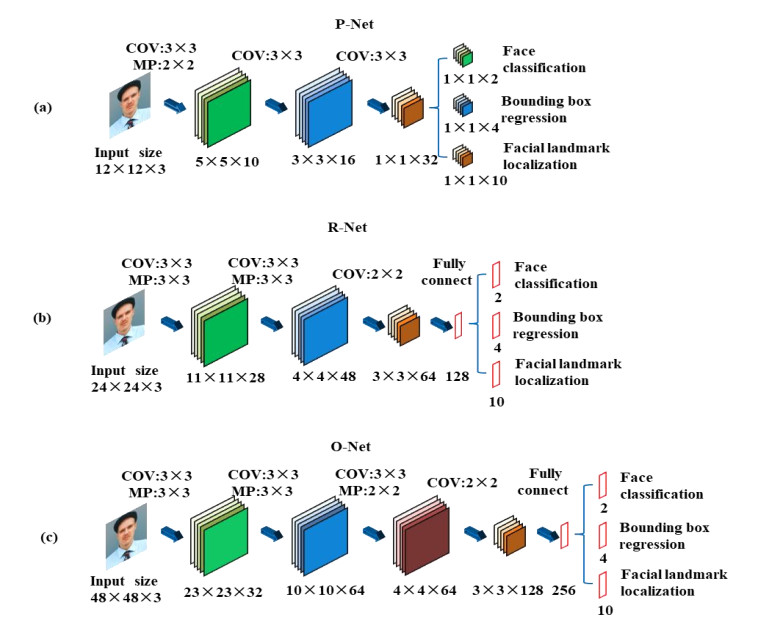









 DownLoad:
DownLoad:


